Art installations are contemporary compositions blending space, mediums, and the senses into an immersive experience. Art installations are three-dimensional compositions that shape how we perceive a physical or virtual area as a dynamic, transformative environment. These works of art engage with and alter the viewer’s senses, often encouraging interactive participation. The collective aim of installations is to emphasize art isn’t just something to view or admire but something to experience with your senses.
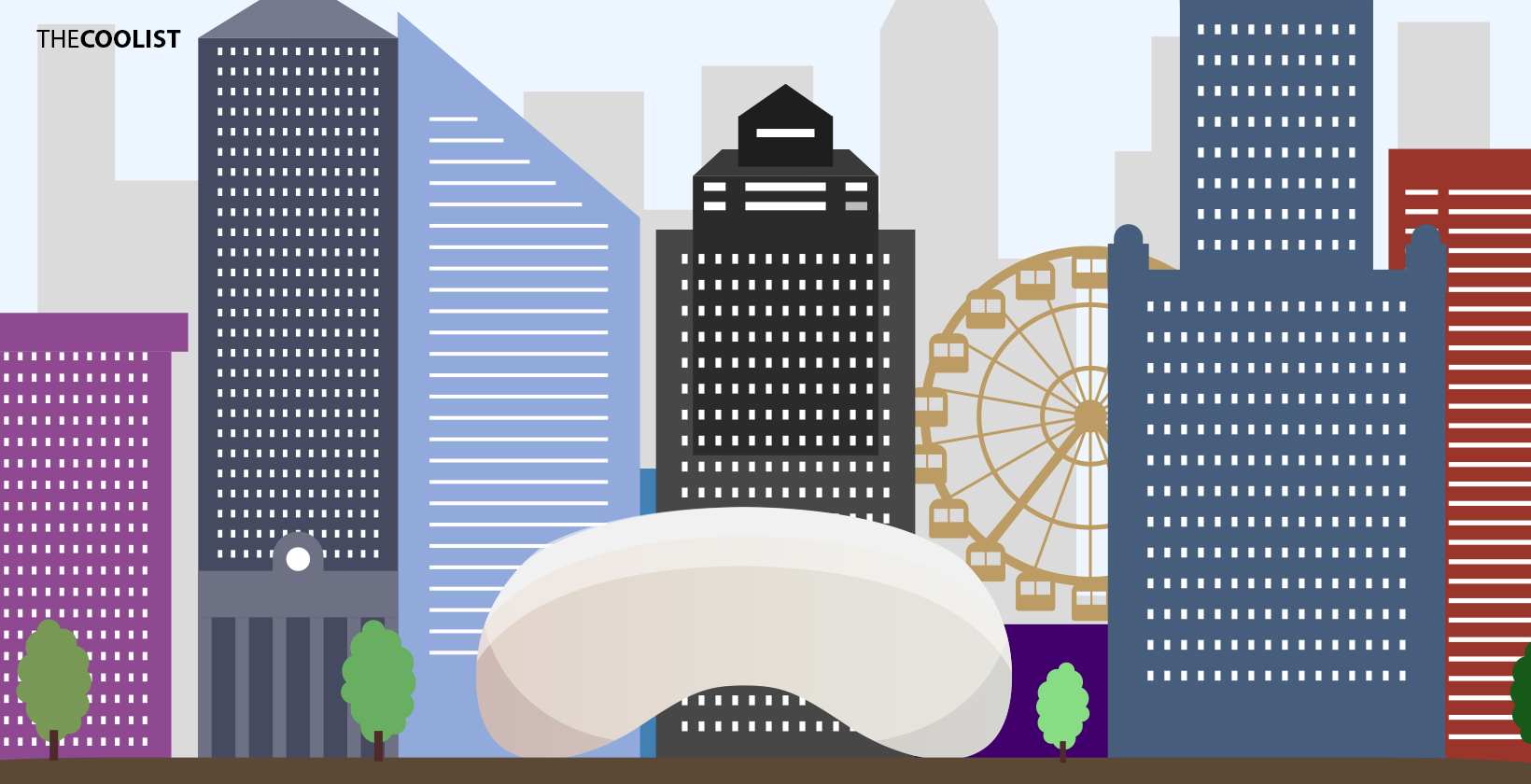
Art installations occupy a unique subdivision in the art world as they encapsulate the potency of interaction and immersion. Art is about creative expression and utilizing various mediums to bring forth a creation that captures your vision. What makes art installations distinctive is that they allow creators to break free from conventional constraints and push the boundaries of traditional art forms. These installations are consequently able to immerse viewers directly in a multi-sensory experience, capturing or transforming the perception of a particular space in ways other art forms cannot. This involves arranging objects, elements, and practices within a given space, allowing both the ensemble and the space to become integral elements of the overall composition.
Art installations serve as dynamic platforms, redefining the very essence of expression and fostering a space where creativity knows no bounds. Prominent examples include Yayoi Kusama’s Infinity Mirrored Room, which creates the illusion of endless space, and Ai Weiwei’s Sunflower Seeds, which represents collectivism and speaks out against consumerism through one hundred million hand-painted porcelain seeds. Meanwhile, Olafur Eliasson’s The Weather Project transformed the Tate Modern’s Turbine Hall into a simulation of the sun and sky.
Art takes many forms, and the same applies to art installations. Different types of installations exist to frame the content and experience of a given composition. This ranges across site-specific, interactive, immersive, kinetic, light, sound, digital, and mixed-media installations. Each type displays specific characteristics. Moreover, each type additionally displays overarching considerations that classify what an art installation is. These considerations include context; intention; temporality; immersion, interactivity; site specification; scale and space; material and media; concept and message, presentation and curation. The list below summarizes these considerations.
- Context: The cultural, historical, and environmental background influences the installation’s creation and reception.
- Intention: The artist’s purpose and objectives.
- Temporality: Whether the installation is temporary or permanent.
- Immersive experience: The degree to which the installation engulfs the viewer.
- Interactivity: The level of audience engagement.
- Site-specificity: The relationship between the installation and its location.
- Scale and space: The physical dimensions and the area occupied.
- Material and media: The substances and techniques used.
- Concept and message: The underlying ideas and themes conveyed.
- Presentation and curation: How the installation is displayed and organized.
Art installations challenge the traditional confines of creativity and offer both creators and viewers the chance to experience something different and meaningful. An installation even has the power to speak up for political or social issues while exploring the importance of experience and immersion as components of art. Below, we explore the concept of art installations including famous examples from around the world.
What is an art installation?
Art installation refers to oftentimes large, three-dimensional compositions that use an entire showing space to create an interactive experience. An art installation utilizes a range of mediums and elements such as digital media or light and sound effects to showcase the creator’s vision in an immersive way. Such creative arrangements are found in various settings, breaking away from the typical gallery displays. For example, installations are housed in public spaces, aircraft hangars, museums, and even underwater.
Installations follow the philosophy that art is an event and something to be experienced. Consequently, installations transcend traditional conventions about visual mediums and make the viewing experience into a type of art itself. By creating an interactive experience that may be large, controlled, fluctuating, or temporary, viewers have the opportunity to experience and explore the creator’s world in a way that is unique to every individual.
What is the importance of art installations?
The importance of art installation lies in broadening a viewer’s understanding, pushing the boundaries of art, and expressing ideas in a large-scale, immersive manner. The medium combines styles and processes to create an experience that directly involves those who view it, drawing them deeper into the world the artist is aiming to create. This in turn allows creators to enact larger, more ambitious expressions of creativity that compel an audience and prompt contemplation. Art often seeks to push boundaries, encouraging people to look beyond their preconceived notions. An installation is pivotal in enabling this by bridging mediums, materials, and elements with ideas, sentiments, and philosophies. This further stresses the importance of installations as they’re a sign of the continued evolution of human expression, aiming to surpass traditional creative practices and transform people’s ideas, deepening their understanding of a subject. Art is everywhere in daily life, and an installation embodies this interaction and uses it to evoke thoughts or emotions in those who are willing to take the time to observe and absorb the creator’s message.
What are the different types of art installations?
Below are the eight different types of art installations.
- Site-specific installations: A site-specific installation is designed to belong in the specific location where it is constructed. Site-specific compositions form a relationship with a location, transforming the viewer’s perception of the site through its artwork.
- Interactive installations: An interactive art installation encourages engagement from the audience. The creative experience or function depends on engagement, which means participation is mandatory for the creator’s vision to be understood. Examples of interactive installations include compositions that respond to touch, movement, or input from the audience.
- Immersive installations: Immersive installations pull the viewer into the composition by engaging multiple senses to create a full-body experience inside a curated environment. Immersion offers a personal and enveloping experience that leaves a different impression on everybody who engages or passes through the space.
- Kinetic installations: A kinetic art installation features moving parts or depends on some form of motion to convey sentiments or ideas. They often explore themes of time, change, and the dynamics of physical space.
- Light installations: A light installation is an exhibition that uses light as the primary medium. A light art installation makes use of shadow, color, intensity, and space to create a visual experience, transforming the mood and atmosphere of an area.
- Sound installations: A sound installation is focused on delivering auditory experiences. An art installation that relies on sound includes everything from musical compositions to complex soundscapes where sound challenges and changes the audience’s perception of a space.
- Digital installations: A digital art installation incorporates digital technologies, such as projection, virtual reality, or interactive software, to create experiences and convey ideas. Digital installations explore the intersection of technology, art, and human interaction.
- Mixed media installations: A mixed media art installation combines various mediums, offering a diverse sensory experience. Mixed media installations blend traditional and unconventional techniques to create multifaceted artworks that leave a distinct impression on anybody who experiences them.
What are examples of art installations?
Below are eight well-known examples of art installations.
- Burning Man installations: The Burning Man installations are site-specific, temporary compositions. They offer large-scale artwork displays depicting interactive, radical, and often surreal designs. Burning Man installations are found around the world. However, the most prominent exhibits occur at the Nevada desert festival.
- Cloud Gate by Anish Kapoor: Cloud Gate is a public and interactive art installation in Chicago’s Millennium Park. The Cloud Gate installation is known for its highly reflective, bean-shaped stainless steel surface that warps and reflects the city’s skyline.
- The Gates by Christo and Jeanne-Claude: The Gates by Christo and Jeanne-Claude was a site-specific art installation found in Central Park, New York City. The Gates construction began in 1979 and was completed in 2005, consisting of 7,503 gates with free-flowing fabric panels, creating a visually striking orange wave through Central Park.
- Sunflower Seeds by Ai Weiwei: Sunflower Seeds by Ai Weiwei is an immersive art installation that filled the Tate Modern’s Turbine Hall with millions of hand-painted porcelain seeds. Visitors could interact with the seeds which are a figure of mass consumption, Chinese culture, and the value of individual and collective work.
- Infinity Mirrored Room by Yayoi Kusama: Infinity Mirrored Room by Yayoi Kusama is a series of immersive light art installations comprising mirrored rooms filled with various lights. The effect of this art installation is the illusion of endless space, which in turn creates a unique visual experience that means something different to each visitor.
- Dinner Party by Judy Chicago: Dinner Party by Judy Chicago is an immersive art installation and is considered a seminal work of feminist art. The Dinner Party installation features a triangular table with 39 place settings, each commemorating an important woman from history. It is considered the Last Supper for women of achievement neglected by history.
- The Weather Project by Olafur Eliasson: The Weather Project by Olafur Eliasson was an immersive art installation exhibited at the Tate Modern. The installation simulated the sun and sky inside the Turbine Hall, creating an environment that altered the viewer’s perception of light and atmosphere.
- Palas por Pistolas by Pedro Reyes: Palas por Pistolas by Pedro Reyes is an interactive art installation that involved melting down 1,527 guns donated by the citizens of Culiacán, Mexico, and remolding them into shovels, which were then used to plant trees. The experience behind this art installation was the growth of peace and a new life free from the violence of guns.
1. Burning Man installations
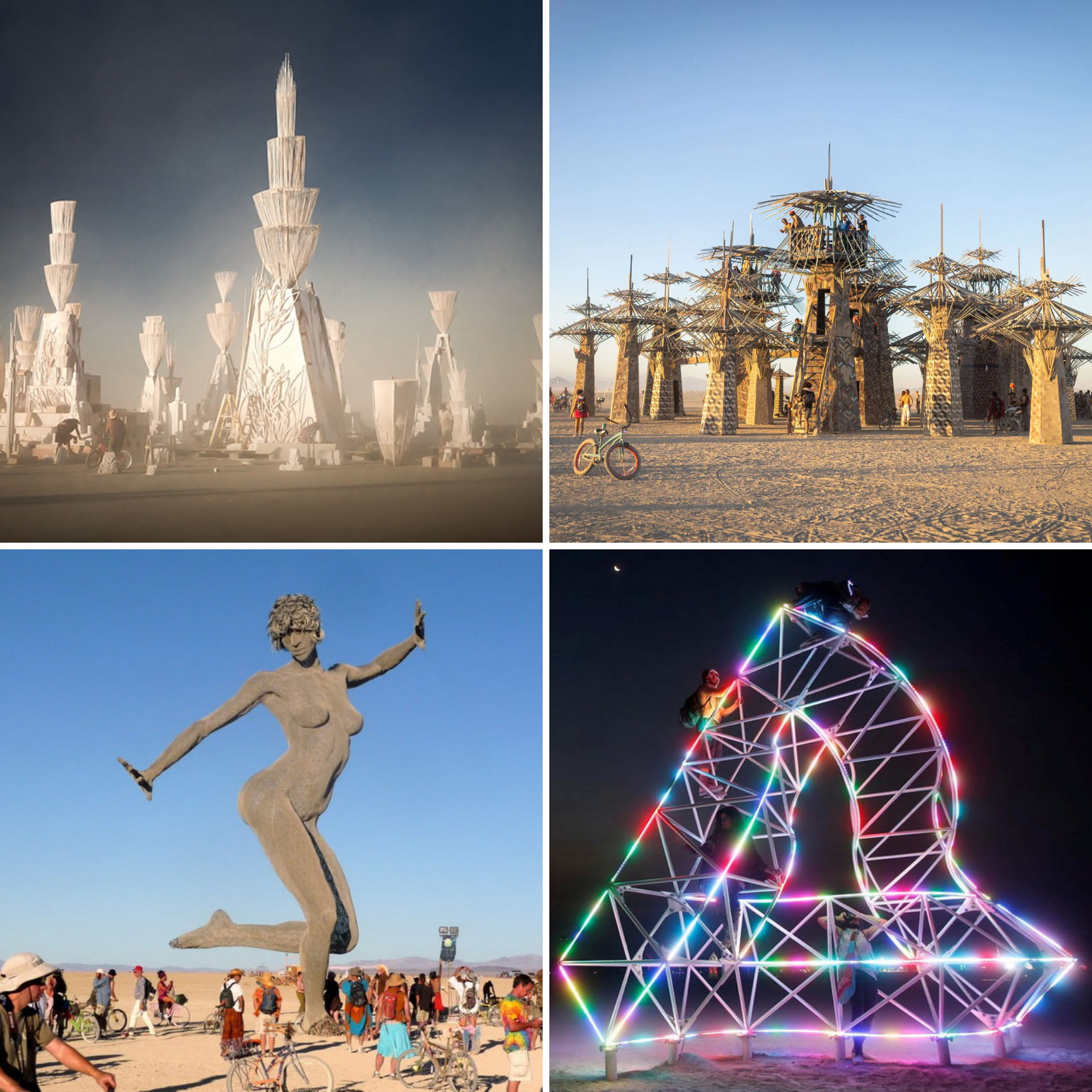
Burning Man installations are site-specific and interactive art installations primarily showcased at the annual Burning Man festival held in Black Rock Desert, Nevada. Popular examples of Burning Man installations include The Penrose Triangle, Paradisium, Bliss Dance, and Temple of Hope: Adventure into Another World. These installations are characterized by large-scale interactivity through the use of different materials. The compositions generally range from sculptures and architectural structures to performance art, creating a fully immersive environment. A notable feature of the Burning Man fixtures is that they’re temporary, erected annually to reflect themes of self-expression, community, and stewardship of the environment. Additionally, many of the structures are burned, underscoring themes of impermanence and renewal, as well as the festival’s founding ethos of radical creativity and leaving no trace behind.
The history of Burning Man art installations dates back to the festival’s inception in 1986. What began as a simple bonfire to celebrate the summer solstice, the first Burning Man event saw a group of friends build and burn a wooden effigy as an act of radical self-expression. Installations are now integral to the festival’s culture. The week-long celebration transforms the desert into a blank canvas for radical self-expression and creativity. Annual installations showcase a range of artworks and experiences, serving as a platform for creators to explore and push the boundaries of traditional art forms. Additionally, Burning Man art installations are growing in popularity annually, with approximately 80,000 people visiting the 2023 structures.
2. Cloud Gate by Anish Kapoor
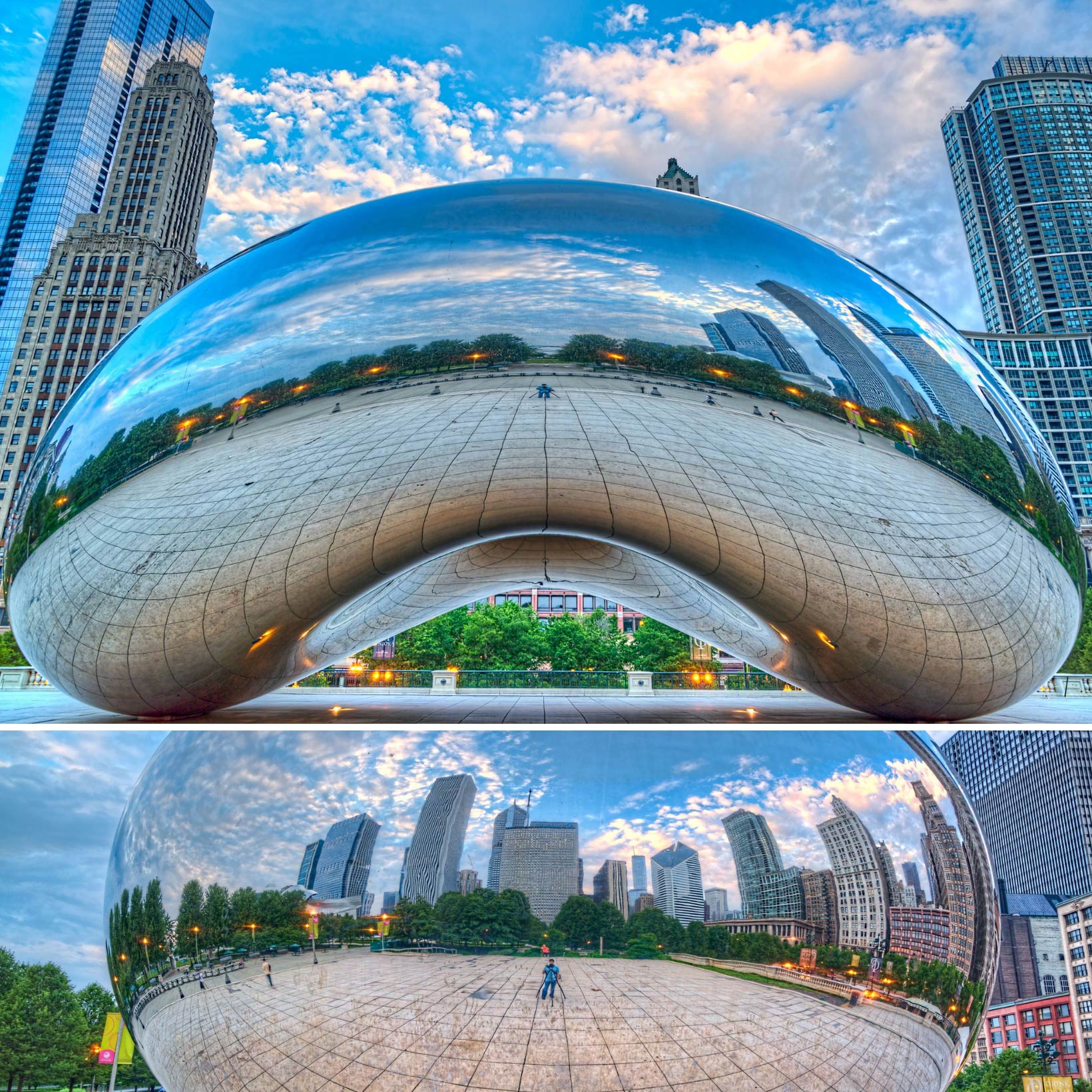
Cloud Gate by British-Indian artist Anish Kapoor is an interactive art installation in Millennium Park, Chicago. Cloud Gate’s seamless surface is an amalgamation of engineering and artistic vision, measuring 66 feet long, 33 feet high, and 42 feet wide. It is colloquially known as “The Bean” due to its shape and is additionally famous for its 110-ton elliptical, highly polished stainless steel structure. Cloud Gate is positioned to reflect Chicago’s skyline and the clouds above, offering a unique experience as everybody views it from a slightly different angle. As a result, the structure invites public interaction and engagement.
Cloud Gate cemented its place as a cultural icon following its 2004 unveiling. The sculpture’s reflective surface and fluid shape allow viewers to experience the city’s architecture from ever-changing perspectives. The true significance of this installation lies in its ongoing ability to engage the public positively. For example, Cloud Gate serves as a gathering place for visitors and locals alike, having become its own community center. Additionally, the initial theme of the Cloud Gate art installation was infinity and the play of light. Kapoor created the structure as the cross-section point between physical space, light as a creative tool, and artistic expression, resulting in a well-loved installation that draws viewers in and encourages interaction.
3. The Gates by Christo and Jeanne-Claude
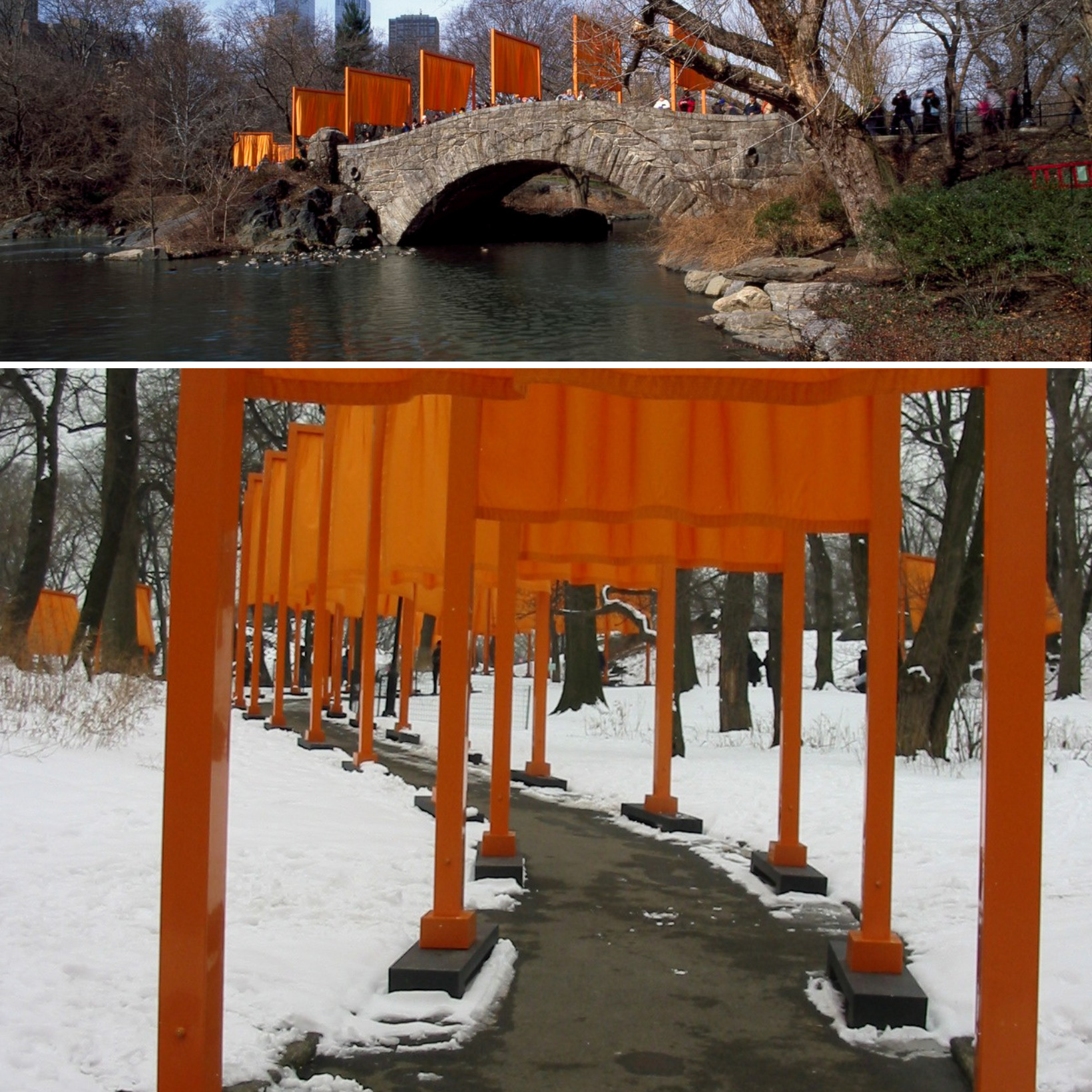
The Gates was a celebrated art installation by the duo Christo and Jeanne-Claude. It was displayed in Central Park, New York City, in 2005 as a temporary, site-specific installation. The Gates consisted of 7,503 vinyl gates along 23 miles of the park’s pathways. Each gate had a free-flowing fabric panel attached to it, all with the same saffron color. Each gate stood sixteen feet high but had varying widths according to the path they were located on. The vibrant fabric panels moved with the wind, transforming the familiar landscape of Central Park into an interactive, fluid art experience.
The Gates were first conceptualized in 1979, but it took over a quarter of a century before it could be realized. The art installation is notable for its scale as well as its interplay with the natural landscape of the park. The Gates’ open accessibility to the public offered an ephemeral experience, encouraging viewers to engage with their environment in a novel way. The entire project was self-funded by the artists, emphasizing their commitment to creating art that was free and accessible to all. Additionally, the project encapsulated themes of impermanence, beauty, and the reinterpretation of public spaces. The installation attracted millions of visitors during its run, highlighting the power of public art and its ability to foster community engagement and reframe everyday landscapes as canvases for artistic expression.
4. Sunflower Seeds by Ai Weiwei

Sunflower Seeds (Kui Hua Zi) is an immersive art installation by Ai Weiwei, a renowned Chinese contemporary artist and activist. The installation is found at the Tate Modern in the Turbine Hall. The original art installation was placed in 2010 and comprised over 100 million porcelain sunflower seeds, each hand-painted by over 1,600 artisans in Jingdezhen, China over two-and-a-half years. The original installation saw the seeds spread across the hall’s floor, creating a carpet-like expanse. Viewers were invited to sit on and interact with the seeds, creating a truly immersive and interactive experience. However, this was later restricted due to health concerns relating to clay dust.
The significance of the Sunflower Seeds installation lies in its multifaceted commentary on social, political, and economic issues. The seeds, while appearing identical at a glance, are uniquely crafted and serve as a symbol of the tension between individuality and collectivism—a theme prevalent in Chinese history and culture. This installation additionally addresses the labor-intensive production processes in China and the global implications of mass production. Ai Weiwei relied on traditional methods to create the installation, highlighting the artists behind each seed and bringing attention to often-overlooked labor contributions. Sunflower Seeds stands tall as a powerful statement on mass consumption, cultural identity, and the role of the individual within society.
5. Infinity Mirrored Room by Yayoi Kusama
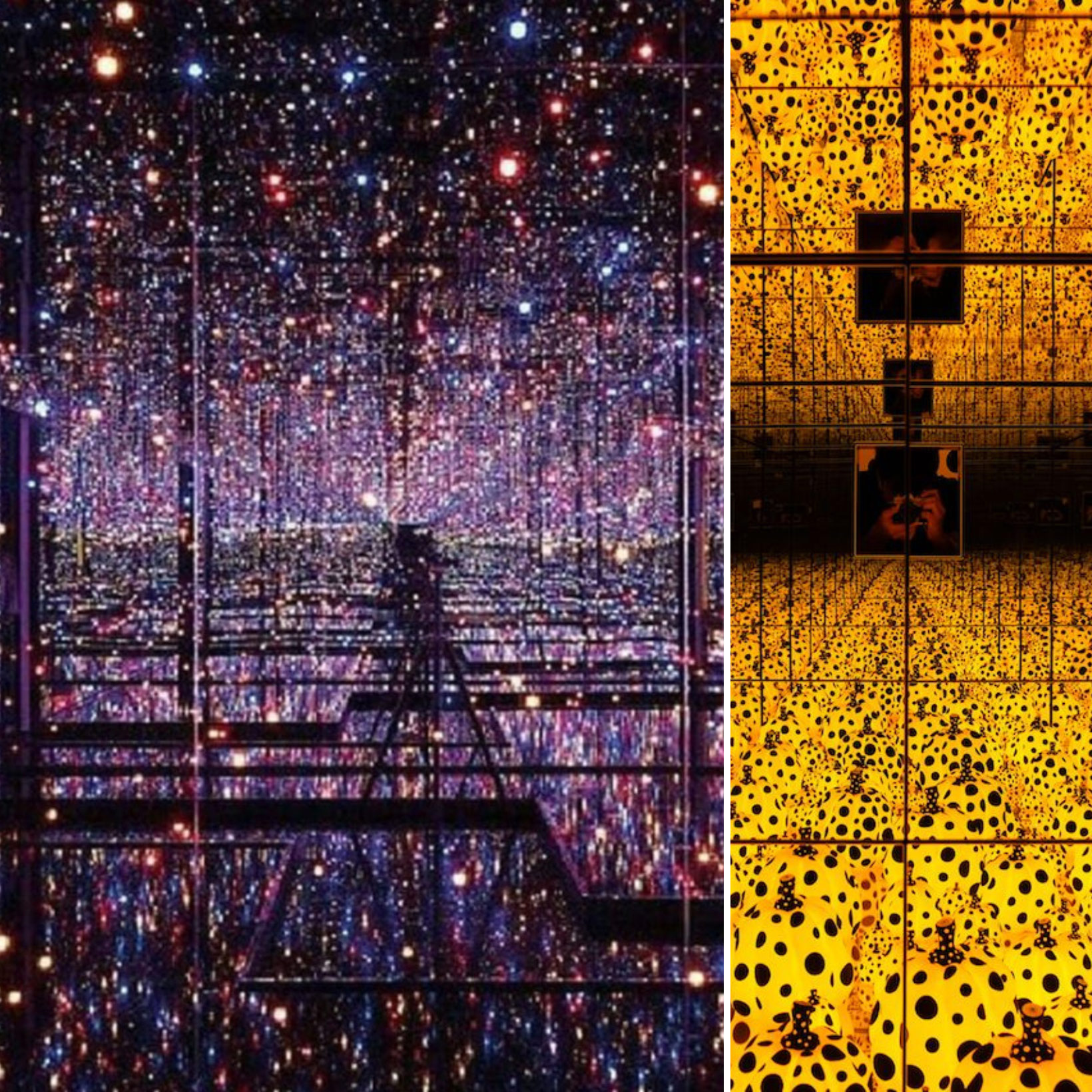
The Infinity Mirrored Room series by Japanese artist Yayoi Kusama is a collection of immersive art installations. Each installation consists of a small, mirrored room filled with a multitude of small lights and other reflective objects. The illusion created is one of endless space and possibility through light and reflection, providing viewers with intimate and unique experiences. The first Infinity Mirrored Room installation was created in 1965. Thereafter, Kusama has produced several variations, each featuring a unique configuration of lights and mirrors, adding to the idea of infinite expression.
The Infinity Mirrored Room art installations are revered in contemporary art for their ability to envelop the viewer in a mesmerizing, infinite landscape. In the installation, Kusama aims to explore the concepts of self-obliteration, infinity, and the cosmic. Each room is designed to challenge the viewer’s perception of space and their place within it. As a result, each Infinity Mirrored Room art installation invites contemplation and introspection, making them significant as both groundbreaking works of art and explorations of the human psyche and the nature of existence.
6. Dinner Party by Judy Chicago
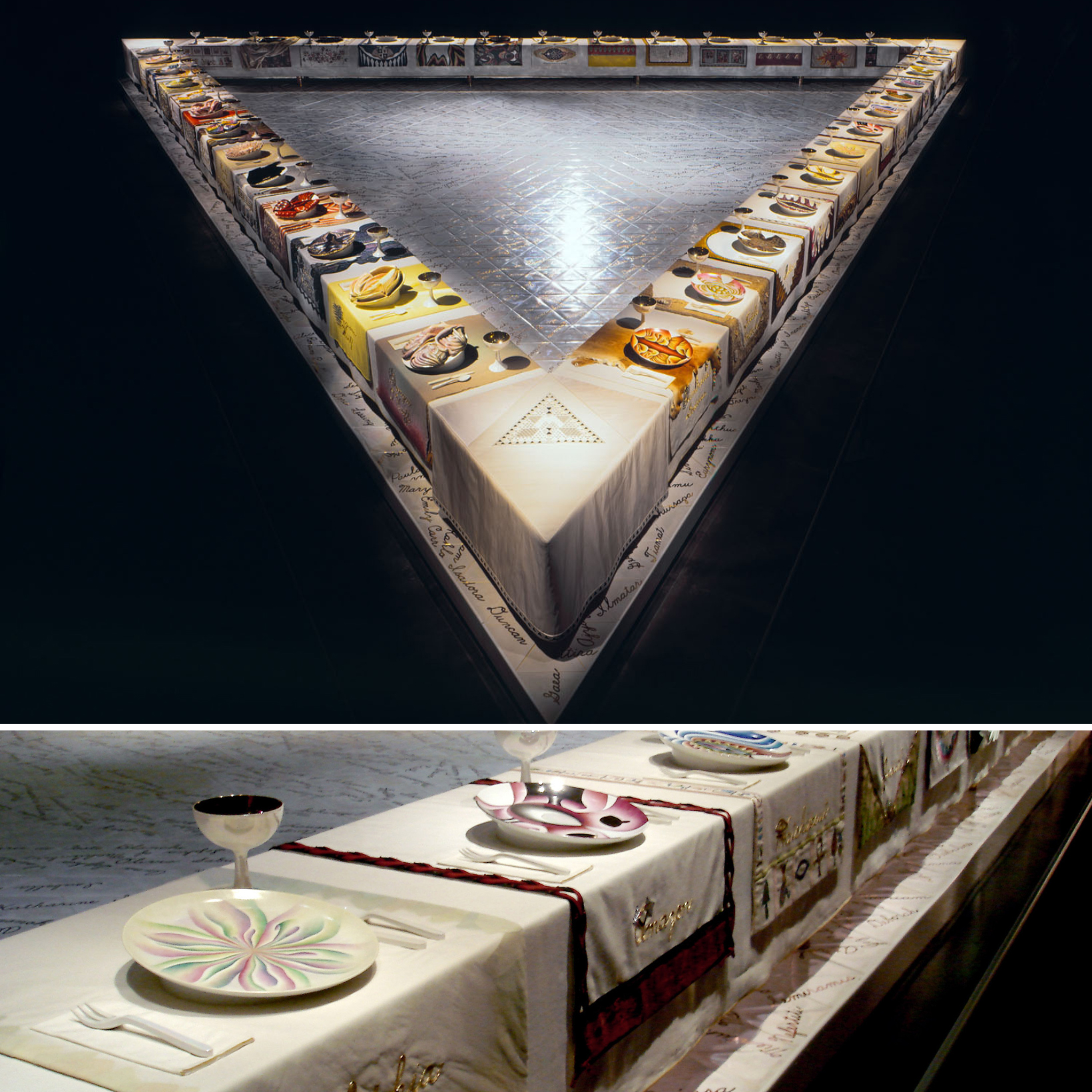
Dinner Party by Judy Chicago is an immersive art installation that merges 1970s feminism and art. Dinner Party was completed in 1979 and consists of a triangular table with 39 place settings. Each setting is dedicated to a significant historical or mythical female figure. The table is set on a floor inscribed with the names of 999 other women who have made a substantial impact throughout history. Each place setting additionally includes a hand-painted china plate, embroidered runner, and chalice designed specifically to reflect the qualities and accomplishments of the woman represented.
The art installation’s historical and cultural significance lies in its bold celebration of women’s achievements and contributions. Dinner Party‘s intention is to sing the praises of people often overlooked in the annals of history. By combining fine arts and crafts, Chicago challenged the male-dominated art world and helped solidify the role of women in the arts during the 1970s.
7. The Weather Project by Olafur Eliasson
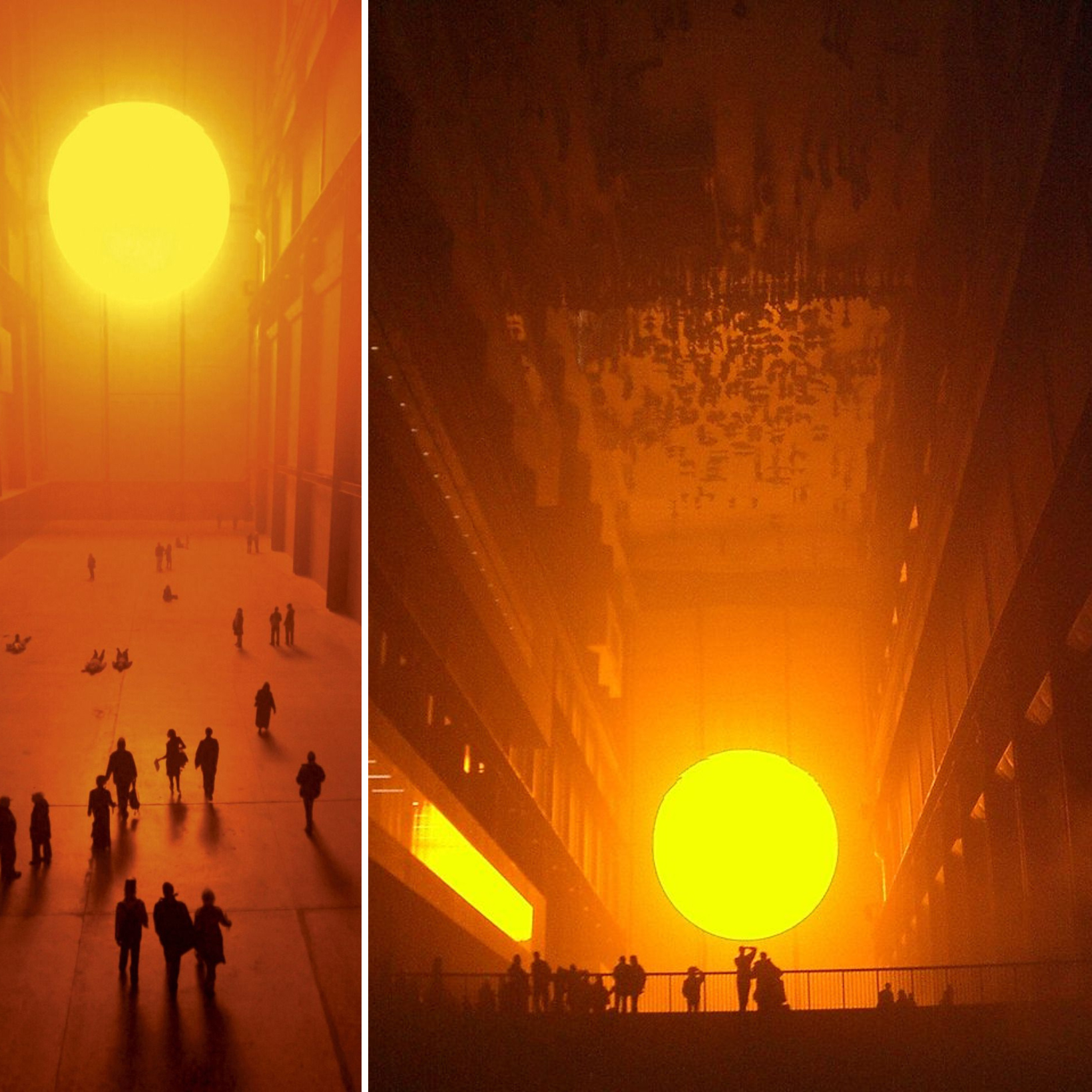
The Weather Project by Olafur Eliasson was an immersive art installation exhibited at the Tate Modern, London in 2003. The Weather Project featured a large semi-circular disc constructed from hundreds of mono-frequency lamps. Each lamp emitted a warm light that mimicked the sun. This disc was installed on the ceiling of the Turbine Hall and created an illusion of a setting sun when viewed from the end of the hall. A mirror was installed onto the ceiling to complete the installation, allowing visitors the ability to see themselves as tiny silhouettes against the glowing backdrop, further enhancing the immersive experience.
The Weather Project art installation holds a significant place in contemporary art history due to its ability to explore and challenge the human experience and our understanding of the world around us. By encouraging visitors to contemplate their relationship with the weather and natural phenomena, the installation blended art with science and nature. As a result, The Weather Project fostered a deeper appreciation for the interplay between art, environment, and human interaction.
8. Palas por Pistolas by Pedro Reyes

Palas por Pistolas is an impactful interactive art installation by Mexican artist Pedro Reyes. Palas por Pistolas embodies a message relating to the power of peace and the need to bring about an end to gun violence. Its creation was initiated in 2008 in Culiacán, Mexico, a region troubled by gun violence. Reyes collected 1,527 firearms through a voluntary donation campaign. These weapons were then crushed, melted down, and recast into 1,527 shovels. The shovels are used to plant trees in various locations globally, symbolizing the conversion of an agent of death into an instrument of life.
Palas por Pistolas transcends traditional art boundaries and manages to merge activism, community involvement, and ecological awareness into a single experience. The installation directly addresses gun violence and its consequences, finding a way to bring about a creative and constructive response. The Palas por Pistolas art installation raises awareness about the proliferation of firearms and their destructive potential while symbolizing the continued presence of hope and the notion of making better choices. Through its ability to involve local communities—especially those that have been impacted by gun violence—by planting trees with shovels made from guns, the installation manages to create a strong sense of collective responsibility and healing.
What form of art is an art installation?
Art installations are a form of contemporary art that focuses on the creation of a multi-sensory experience designed to transform the perception of a space. Installations additionally often align with types of art such as conceptual compositions, centering on an idea or sentiment and employing unconventional approaches to human creativity. However, the defining feature of an installation is its ability to modify the viewer’s experience of a space, creating an environment that merges the boundaries between art and a topic. The resulting work challenges the traditional notions of art as something to only be looked at, inviting the viewer to step inside and experience the composition.
Can art installations influence social or political change?
Yes, art installations have the ability to influence social or political change. Art installations convey impactful visual statements and sensory experiences that help raise public awareness and inspire action, akin to any other form of art. That said, installations engage audiences in a way traditional, one-way mediums cannot. For instance, the immersion or interaction of an installation fosters understanding and connection by incorporating a message into a space, be it real or physical, that targets the senses. As a result, an art installation is able to turn a public space into a platform for dialogue and societal reflection. Additionally, the multi-sensory approach that installations offer helps to connect with a diverse audience, bringing more eyes and ears to a cause than a traditional art show could yield. Artists like Ai Weiwei, Banksy, and Olafur Eliasson have utilized installations to comment on political and social issues—highlighting the power of this medium to challenge perceptions and encourage positive change.
What considerations are needed to classify an art installation?
Below are the ten core considerations that impact an exhibit being classed as an art installation.
- Context: The cultural, historical, and environmental backdrop against which the installation is set plays a role in its interpretation and impact.
- Intention: The creator’s purpose behind creating the composition defines its classification and influences how it is received and interacted with.
- Temporality: Many installations are temporary, existing only for a set period, which adds to their significance and classification.
- Immersive experience: An art installation aims to create an encompassing environment that offers multi-sensory engagement to the viewer.
- Interactivity: The degree to which the audience is able to interact with the art installation contributes to its overall message and significance.
- Site-specificity: Art installations are frequently designed for and around a specific location, with their meaning and impact tied to their setting as much as the composition on display.
- Scale and space: The physical size of an art installation and the space it occupies play a key role in its presentation and the level of audience engagement.
- Material and media: The choice of materials and media used in the installation contributes to its thematic and aesthetic qualities.
- Concept and message: The underlying ideas and messages conveyed through the installation are central to its artistic value, significance, and classification.
- Presentation and curation: How the installation is presented and curated influences the viewer’s experience and interpretation.
1. Context
Context is a vital classification for an art installation and is applied to the cultural, historical, social, and environmental backdrop of the composition. Context shapes the creation, display, and interpretation of an art installation by providing depth and specific relevance. Understanding context is essential for grasping the artist’s vision and gleaning the intended message from their work.
2. Intention
Intention is an aspect of the classification of art installations and refers to the purpose and objectives behind the created experience. Intention guides the concept, design, and execution of an installation, influencing how it communicates with and impacts the audience. Recognizing the artist’s intention is fundamental in interpreting the artwork’s meaning and its place within the broader context of both art and the cause, sentiment, or philosophy it represents.
3. Temporality
Temporality is a crucial element in classifying art installations, as the concept of time helps to draw a specific focus onto the cause, context, or intention of the composition on display. Temporality relates directly to the duration for which an art installation exists, emphasizing the transient or permanent nature of the work or its topic. It additionally impacts the viewer’s experience by being a temporary or long-term fixture, becoming as much a part of the exhibit as the space and artwork displayed within its boundaries.
4. Immersive experience
Creating an immersive experience is one of the primary validating characteristics of an art installation. The ability to provide an experience deeper than just optical engagement and incorporate a multi-sensory viewing is paramount for an art installation. Immersion transforms the audience’s perception and interaction within a dedicated space, creating a more personalized experience and a deeper resonance with the viewer. Recognizing an installation’s immersive experience is vital when assessing its impact and overall effectiveness, making it a fundamental element in categorizing art installations.
5. Interactivity
Interactivity is a classifying element of art installations that measures how much viewers are able or encouraged to engage and influence a composition. Active participation is intrinsic to installation due to its transformative impact, taking viewers from passive observers to active participants. Interactivity alters a piece’s form, meaning, and overall experience for the individual, resulting in a dynamic and personalized experience. Evaluating the level of interactivity is crucial for understanding the relationship between the creation, its space, and its audience.
6. Site-specificity
Site-specificity is a fundamental aspect of defining an art installation and refers to experiences designed to exist in a particular location. This characteristic signifies whether an installation is intrinsically linked to its environment, with its meaning and impact connected to the physical and conceptual attributes of the space it inhabits. Site-specific installations interact with their surroundings to create an experience that is unique to the area and cannot be replicated in another location. Many art installations are site-specific, becoming temporary or permanent fixtures whereas others, such as virtual installations, are able to transcend borders.
7. Scale and space
Scale and space are pivotal elements in the classification of art installations as they focus on the physical dimensions of the work and the area it occupies. The scale of an installation ranges from intimate to monumental, depending on the location, site-specificity, and the meaning behind the installation. The utilization of space is a vital part of the art experience as it directly impacts how the installation interacts with its surroundings and how viewers engage with the work. Consequently, analyzing an installation’s scale and spatial arrangement is vital for understanding its impact and the artist’s intent.
8. Material and media
Material and media are crucial considerations in art installations as they define the physical substances and techniques used to create the work. Material and media influence the installation, impacting everything from texture and form to the overall aesthetic and manner of interaction. The choice of materials and media ranges from organic elements like wood and metal to innovative digital technologies—all of which depend on the thematic and sensory requirements needed to fulfill the artist’s vision. Understanding the selection and application of materials and media is essential for ensuring the installation delivers the correct message and has the desired effect on viewer engagement.
9. Concept and message
An art installation’s overall concept and message are integral to its classification. The concept and message represent the ideas and themes conveyed through the artwork and the surrounding experience. Concept drives the creative process, defining the purpose, while the message is the way everything is communicated back to the audience. Concept and message help shape the viewer’s experience and, ultimately, their emotional response to the installation.
10. Presentation and curation
Presentation and curation are crucial aspects of classifying art installations, referring to how the artwork is displayed and experienced. Presentation encompasses the setup, configuration, lighting, and other necessary effects, significantly impacting the viewer’s perception and overall experience. On the other hand, curation pertains to the selection of artworks, objects, or details included in the installation. Each element must contribute individually and holistically to the desired experience. Together, presentation and curation shape the installation’s narrative and guide the viewer’s journey through the art.
Can art installations exist in virtual spaces?
Yes, art installations are able to exist in virtual spaces. The evolution of digital technology has enabled the creation of immersive art installations in virtual realms. A virtual art installation offers a unique experience unbound by physical limitations, allowing artists to explore new dimensions of interactivity and engagement. The ability to create entirely virtual art installations additionally provides artists with the platform they need to present their projects to a global audience and experiment with the creative prospects of virtual and augmented reality.
Is Video Games vs. Real Life by Aled Lewis considered an art installation?
No, Video Games vs. Real Life by Aled Lewis is not considered an art installation. It is instead a series of photographs and digital artworks to be viewed as individual, visual experiences. Aled Lewis’ Video Games vs. Real Life project juxtaposes characters and elements from classic video games into real-life photographs. The result is a playful and thought-provoking contrast between the virtual and the real worlds. The concept behind Video Games vs. Real Life is similar to that expressed in art installations, but the lack of a multi-dimensional experience keeps this particular project from earning the art installation label.
Is The Isle of Human by Johan Rosenmunthe considered an art installation?
No, The Isle of Human by Johan Rosenmunthe isn’t considered an art installation. Rosenmunthe’s work is a photo series depicting animals in a setting of urban decay. The Isle of Human blends digital media and the process of photo manipulation, a technique seen in virtual installations. However, the work doesn’t occupy a space nor is it interactive. Therefore, we do not categorize it as a type of art installation.
Is Mini Golf as Art by La Bolleur considered an art installation?
Yes, Mini Golf as Art by La Bolleur is considered an art installation. Mini Golf as Art is a project from the artistic collective La Bolleur, which aims to transform the concept of mini golf into a creative experience. La Bolleur redesigned the traditional mini golf course, filling it with creative and unconventional obstacles and aesthetics. The result of their efforts was an elevated version of the familiar family game, which transcended its functionality to become an interactive piece occupying a physical space.
Can Twig Terrariums be considered an art installation?
Yes, Twig Terrariums can be considered an art installation, depending on the context and presentation. Twig Terrariums was a New York-based business that gained fame for intricate miniature landscapes within glass containers. Each terrarium alone may not be considered an art installation, but they align with the characteristics of the medium when they’re arranged in a specific space to create an immersive, thematic, or conceptual experience. The decisive factor is how the terrariums are presented and interact with the space, transforming the perception of that space and offering an immersive experience.
How can Twig Terrariums be considered an art installation?
Twig Terrariums must have their arrangement offer an immersive or conceptual experience to be considered an art installation. Transforming a composition into a thematic or transformative environment aligns with the essence of an art installation, allowing the miniature landscapes to engage viewers beyond the visual details. Including the display space as part of an experience elevates Twig Terrariums from individual art objects to a cohesive art installation.
Can Teenage Stories by Julia Fullerton-Batten be considered an art installation?
No, Teenage Stories by Julia Fullerton-Batten is not considered an art installation. Teenage Stories is a series of photographs and does not offer the level of interaction or experience required to be classified as an art installation. Furthermore, Fullerton-Batten’s series is a collection of staged photographic works exploring the emotional dynamics of the teenage years. The photographs are artistic and evocative but do not create an immersive, interactive, or multi-sensory viewer experience.
What distinguishes an art installation from other forms of visual art?
An art installation is distinguished from other forms of visual art due to its immersive, interactive, and transformative nature. Installations are three-dimensional and transform a location by interweaving it into the composition itself, engaging viewers within a specific environment. This often encourages and relies on interaction or participation for the full intent of the art to be realized. More traditional examples of visual arts, such as those involving the display of paintings or sculptures, do not capitalize on location in this way. They instead funnel people’s sight to the object displayed. Conversely, art installations create a multifaceted experience that encompasses the viewer, extending beyond visual stimulation to include sensory elements like sound, touch, and even smell.
What is the difference between virtual art installations and physical art installations?
Virtual art installations and physical art installations differ in six ways: medium, mode of interaction, accessibility, spatial experience, sensory engagement, and setup and maintenance. The list below outlines each difference.
- Medium: Virtual art installations exist solely or primarily in the digital realm and use technologies like software programs or augmented reality to convey ideas. Meanwhile, physical installations are created in real-world spaces using tangible materials that viewers are able to physically interact with.
- Mode of interaction: Virtual art installations often require digital devices for interaction, such as VR headsets, computers, or touch screens. Physical installations are interacted with directly within a defined space.
- Sensory engagement: Both visual and physical art installations engage the senses. However, only physical installations have the ability to offer tactile and direct sensory engagement. Virtual installations are limited to the provision of simulated sensory experiences.
- Accessibility: Virtual installations are accessed remotely from anywhere, broadening their reach. Physical art installations require the viewer to be present at a specific location, making it less accessible.
- Spatial experience: Virtual installations create environments that are not governed by the restrictions of reality such as the laws of physics. Consequently, a virtual composition offers the potential for fantastical and unreal experiences. Meanwhile, physical installations must exist within the constraints of real-world laws and boundaries.
- Setup and maintenance: Virtual installations may require less physical space and are easily modified and replicated, making simultaneous installations possible globally. Physical art installations involve more complex logistics in terms of setup, maintenance, and space requirements.
Both virtual and physical art installations must deal with respective positives and negatives. Even so, both offer something unique and often work in tandem to help promote a topic, convey sentiments, and challenge the mindset of anybody who visits.

